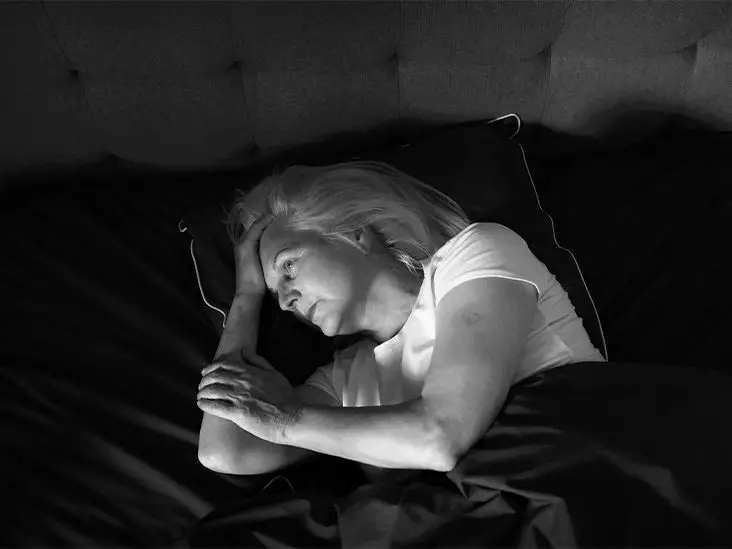Anxiety dreams, often characterized by feelings of worry, stress, and tension, represent a complex interplay between our subconscious and daily experiences. These dreams can manifest in various forms, ranging from benign inconveniences to life-altering crises, reflecting our mental state and emotional turmoil. This article seeks to examine the nature of anxiety dreams, their triggers, and potential coping strategies while fostering a deeper understanding of their implications for mental health.
Anxiety dreams typically arise during periods of heightened stress or concern, presenting vivid scenarios that align closely with an individual’s waking life experiences or, conversely, events plucked from the depths of imagination. Such dreams may leave individuals with a racing heartbeat, rapid breathing, or lingering feelings of distress upon awakening. The differentiation between anxiety dreams and nightmares often blurs, as both can elicit negative emotional responses, yet they do serve distinct purposes according to many definitions.
While some may use “anxiety dreams” to categorize those experiences rooted in stress and tension, they use the term “nightmare” for dreams that induce fear, terror, or shock. Common themes within anxiety dreams include scenarios such as being unprepared for an important test, facing public humiliation, or even grappling with the overwhelming sensations of being pursued or trapped. The emotional repercussions of experiencing such dreams can lead an individual to recognize deeper underlying issues in their waking life.
The Link Between Daily Stressors and Dreams
Research indicates that profound life changes often have significant repercussions on the quality of dreams. For instance, during the COVID-19 pandemic, many people reported an increase in both the recall and intensity of their dreams, illuminating how global crises can unearth dormant anxieties. A 2021 study found that 34% of participants recalled having increased dream activity during lockdown periods, particularly among those grappling with moderate to severe stress. Imagery reflecting loss, illness, and pandemic-related fears became central to the dreams reported by these individuals.
Moreover, another study conducted the same year indicated that those most impacted by the pandemic experienced heightened emotional content within their dreams. The tumultuous nature of their reality brought forth dreams that were often emblematic of significant life changes and grief, highlighting the intrinsic link between our emotional states and the landscape of our dream world.
While occasional anxiety dreams may not warrant alarm, recurring episodes can signify persistent emotional distress, prompting the need for effective management strategies. Each individual’s experience with anxiety dreams is unique, necessitating a tailored approach to mitigating their occurrence. Some practical methods include creating an optimal sleep environment—cool, dark, and quiet, which can significantly reduce disruptive stimuli. Additionally, establishing a consistent sleep routine can help regulate the sleep cycle.
The NHS recommends several practices for better sleep hygiene, such as allocating time to unwind before bed and employing relaxation techniques to acclimatize the mind or body for rest. If a person finds it difficult to fall asleep, they are advised to engage in calming activities, such as reading or meditative practices, rather than forcing themselves to sleep. Avoidance of stimulants before bedtime can also support a more peaceful night of rest.
For individuals experiencing intense episodes of anxiety dreams, recognizing the signs of stress and addressing them is crucial. Strategies may include reevaluating priorities, breaking down tasks into manageable segments, and reaching out for support from friends or loved ones. Mindfulness and self-care routines can enhance mental well-being, ultimately decreasing the frequency of stressful dreams.
In cases where anxiety dreams signal more chronic mental health concerns—like anxiety disorders—it becomes paramount to seek the assistance of a mental health professional. A therapist can aid in unpacking the layers of one’s mental landscape and guide individuals in navigating their feelings and experiences surrounding their dream patterns. Cognitive-behavioral therapy, for instance, is an effective way to confront and reframe distressing thoughts and dream narratives.
Additionally, the technique of lucid dreaming has gained traction as a potential avenue for individuals seeking to confront their anxiety in the dream realm. Lucid dreaming allows for the awareness of being in a dream, giving individuals the potential to alter their experience. Recent studies indicate that many find reigning control over such dreams beneficial for mental health, enabling them to reduce fear-based responses.
Anxiety dreams represent not just fleeting nighttime occurrences but rather reflections of our inner psychological conflicts and external pressures. Recognizing the correlation between these dreams and our waking lives is essential for achieving comprehensive mental health. By understanding their significance, employing practical coping strategies, and seeking professional guidance when necessary, individuals can foster a healthier relationship with their sleep and embark on a fulfilling journey toward emotional stability.

